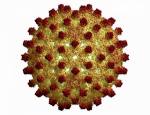
(Photo credit: http://www.sciencephoto.com/media/349386/enlarge)
Jamie is 13 and hasn’t even kissed a girl. But he’s now on the Sex Offender Register after online porn warped his mind… (Read more: http://www.dailymail.co.uk/news/article-2135203/Jamie-13-kissed-girl-But-hes-Sex-Offender-Register-online-porn-warped-mind-.html#ixzz1tC9S3XSW)
My mind was blown when I read this headline. It was benumbing to learn that a 13-year-old boy, who never touched a girl gets enlisted as a sex offender (for the rest of his life). He is now in the same ranks as those adult perverts who actively, sexually violated other individuals, even if he never committed any similar offense but merely accessed online pornography materials. This is disturbing as it could be a precedent of what will happen to our young and succeeding generations, what with the wide array of accessing the digital media.
SIGMUND FREUD’S PSYCHOSEXUAL DEVELOPMENT
(REFERENCE: http://psychology.about.com/od/theoriesofpersonality/ss/psychosexualdev.htm)
Freud believed that personality develops through a series of childhood stages during which the pleasure-seeking energies of the id become focused on certain erogenous areas. This psychosexual energy, or libido, was described as the driving force behind behavior.
If these psychosexual stages are completed successfully, the result is a healthy personality. If certain issues are not resolved at the appropriate stage, fixation can occur. A fixation is a persistent focus on an earlier psychosexual stage. Until this conflict is resolved, the individual will remain “stuck” in this stage. For example, a person who is fixated at the oral stage may be over-dependent on others and may seek oral stimulation through smoking, drinking, or eating.
During the oral stage, the infant’s primary source of interaction occurs through the mouth, so the rooting and sucking reflex is especially important. The mouth is vital for eating, and the infant derives pleasure from oral stimulation through gratifying activities such as tasting and sucking. Because the infant is entirely dependent upon caretakers (who are responsible for feeding the child), the infant also develops a sense of trust and comfort through this oral stimulation.
The primary conflict at this stage is the weaning process–the child must become less dependent upon caretakers. If fixation occurs at this stage, Freud believed the individual would have issues with dependency or aggression. Oral fixation can result in problems with drinking, eating, smoking or nail biting.
2. THE ANAL STAGE
Age Range: 1 – 3 years
Erogenous Zone: Bowel and Bladder Control
During the anal stage, Freud believed that the primary focus of the libido was on controlling bladder and bowel movements. The major conflict at this stage is toilet training–the child has to learn to control his or her bodily needs. Developing this control leads to a sense of accomplishment and independence.
According to Freud, success at this stage is dependent upon the way in which parents approach toilet training. Parents who utilize praise and rewards for using the toilet at the appropriate time encourage positive outcomes and help children feel capable and productive. Freud believed that positive experiences during this stage served as the basis for people to become competent, productive and creative adults.
However, not all parents provide the support and encouragement that children need during this stage. Some parents’ instead punish, ridicule or shame a child for accidents. According to Freud, inappropriate parental responses can result in negative outcomes. If parents take an approach that is too lenient, Freud suggested that an anal-expulsive personality could develop in which the individual has a messy, wasteful or destructive personality. If parents are too strict or begin toilet training too early, Freud believed that an anal-retentive personality develops in which the individual is stringent, orderly, rigid and obsessive.
3. THE PHALLIC STAGE
Age range: 3 – 6 years
Erogenous Zone: Genitals
During the phallic stage, the primary focus of the libido is on the genitals. At this age, children also begin to discover the differences between males and females.
Freud also believed that boys begin to view their fathers as a rival for the mother’s affections. The Oedipus complex describes these feelings of wanting to possess the mother and the desire to replace the father. However, the child also fears that he will be punished by the father for these feelings, a fear Freud termed castration anxiety.
The term Electra complex has been used to described a similar set of feelings experienced by young girls. Freud, however, believed that girls instead experience penis envy.
Eventually, the child begins to identify with the same-sex parent as a means of vicariously possessing the other parent. For girls, however, Freud believed that penis envy was never fully resolved and that all women remain somewhat fixated on this stage. Psychologists such as Karen Horney disputed this theory, calling it both inaccurate and demeaning to women. Instead, Horney proposed that men experience feelings of inferiority because they cannot give birth to children.
4. THE LATENT STAGE
Age range: 6 to puberty
Erogenous Zone: Sexual feelings are inactive
During the latent period, the libido interests are suppressed. The development of the ego andsuperego contribute to this period of calm. The stage begins around the time that children enter into school and become more concerned with peer relationships, hobbies and other interests.
The latent period is a time of exploration in which the sexual energy is still present, but it is directed into other areas such as intellectual pursuits and social interactions. This stage is important in the development of social and communication skills and self-confidence.
5. THE GENITAL STAGE
Age range: puberty to death
Erogenous Zone: Maturing sexual interests
During the final stage of psychosexual development, the individual develops a strong sexual interest in the opposite sex. This stage begins during puberty but last throughout the rest of a person’s life.
Where in earlier stages the focus was solely on individual needs, interest in the welfare of others grows during this stage. If the other stages have been completed successfully, the individual should now be well-balanced, warm and caring. The goal of this stage is to establish a balance between the various life areas.
Given such background, it is but appropriate that the opportune time to educate children regarding human sexuality is during the Latent Stage, the age when rational, cognitive thinking begins. It is but proper that human sexuality be taught as a formal, standardized lesson, incorporated in their curriculum. Surely it will draw laughters and giggles while being taught, it being a formal lesson will eliminate the awkwardness and taboo that comes along with it when discussed by inexperienced and ill-prepared parents. If at this age we already can teach our children how to cook, what the ingredients are, and how to mix them up together to make the best recipe they can enter for a junior masterchef audition and competition, why can’t we teach them about sperm, ovum, penis, vagina, uterus, prostate gland, fertilization, zygote, fetus? Why can’t we teach them about their body parts? If we avoid educating our children at the most appropriate occasion, they will find different ways to fill in the void in their knowledge and nagging questions about themselves and their sexuality. The more it is hidden from their consciousness, the more it triggers their inquisitive minds and curiosity to find out about it through other means possible.
Digital media is a dangerous venue for this exploration, and is easily accessible. Even if parents prohibit their kids at home exploring through adult websites, these kids will just save their allowance and surf through those websites in internet cafes. Shop owners won’t mind nor do they regulate the websites accessed by their customers, as long as they pay. And if this happens, how many “Jamie” who got introduced to online pornography during a seemingly innocent “sleep over” in a friend’s house, are we breeding? Will it bring you pride if your child’s innocent life has been tainted with a lifetime label, a SEX OFFENDER?










